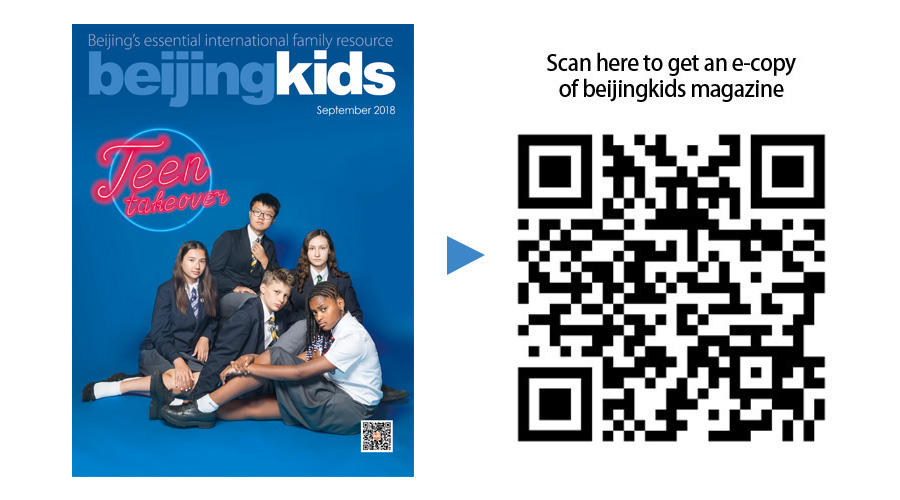In every educational establishment of this city, from traditional Chinese institutions to Beijing’s international schools, the desire of our parents for us students to succeed is evident. The race for the best tutors, the reach for the best grades, and ultimately the sprint for the best universities—present in every family, these are competitions which may at times be more nuanced, yet are always there.
Despite all of this, it is an unfortunate reality that the system we have grown accustomed to sometimes fails to provide kids with topics which truly absorb them. For every aspiring mathematician fascinated by the list of double angle formulae, there is a budding entrepreneur whose itch to build and innovate is sadly unmet by any subject presented to them in a standardized curriculum. And this, right here, is the problem. Kids are told that they can do anything, be anyone… to dream big, as it were. Yet, few of us dare to realize the honestly quite harsh (and scary!) truth: that we might just lack the proper tools to do so.
Whether we like to admit it or not, there are simply too many restrictions in a physical schooling system. There can only be so many buildings and classrooms and desks and teachers. This isn’t an accusation of our city’s educational infrastructure—it’s a hard reality. Whether it is the IB, AP, GSCE, or a traditional Chinese curriculum, there just cannot be enough options and varieties of topics for us (the students) to be able to truly experiment and freely pursue our interests.
Online courses, on the other hand, are tremendously scalable, hence the term MOOC: Massive Open Online Course. This hints at one of the most valuable aspects of e-learning, that its digital nature eliminates many of the barriers holding us back in the physical world – the “frictions”, as Professor David Bell of the Wharton School at U-Penn calls them in his MOOC which I’ve actually just finished, titled E-Commerce and Entrepreneurship in the Digital Economy.
While a traditional classroom setting can only be capable of hosting a specific number of people at a specific location at a specific time, e-learning allows for content to be shared and accessed by a potentially unlimited number of people from all around the world, at any time they so desire.
Most online courses follow an “on-screen, on-demand” format. Materials are primarily pre-recorded video class sessions and are available to students 24/7 for playback as needed. This format allows for an interactive style of learning where a student can feel engaged, as a real professor uses conversational language to provide content despite not being physically present. It also enables students to tailor the pace of the teaching to suit their own preferred learning styles.
Let’s take a look at some of the front runners of in the game of e-learning.
EDX
EDX (pronounced “Ed-Ex”) is a non-profit MOOC-hosting platform founded by Harvard and MIT in 2012 and is cited by some sources such as the New York Times as being the most popular application currently out there. This coveted reputation comes from the 14 million students actively using their service each year. EdX offers more than 1800 unique courses through their Open-Source Platform, coming from over 100 reputable institutions worldwide—ranging from US or Chinese universities to professional corporations. The caveat is that the best EdX courses are on the premium platform, but most paid options do come with recognized certificates, though EdX services do not offer functional degrees.
Coursera
Coursera is another large MOOC service founded in 2012 by Stanford professors and has since expanded to partner with 149 institutions across 29 countries. Coursera courses traditionally last for between four and ten weeks, with one to two hours of video material provided each week. Unlike most EdX courses—which generally release all materials at the commencement of each course—Coursera courses release their materials in stages. Some courses also operate in a way which restricts access to past material after a certain point. This tends to mean that Coursera courses can be more rigorous and demanding of their students. Coursera scores over EdX, though, by offering fully accredited bachelors and masters degrees since 2017.
Udacity
Udacity, unlike the previous two, is a for-profit MOOC platform, offering courses at both the university level as well as professional qualifications. It was founded in 2012 through a Stanford outreach program, and it just so happens that the early renditions of Udacity and Coursera stemmed from a single collaborative effort by a Stanford team. This service hosts 1.6 million users, again through both free and paid courses yielding the likes of university credits, masters, and bachelors degrees, and “nanodegrees”—a degree system recognizing technical ability, unique to Udacity and launched through its partnership with AT&T. Nanodegrees have gone on to become closely associated with careers at the AT&T Corporation, beginning with entry-level positions.
Udemy
Udemy is unique in that unlike MOOC programs which are driven by traditional collegiate coursework and a university styled structure, this platform uses content created by specialist instructors. Udemy provides tools which enable users to create a course, promote it, and earn money from student tuition charges. This format allows for an increased amount of flexibility in terms of what type of courses are offered. Here, there are courses in everything from digital design and 3D modeling to computer programming and even Reiki healing. Though degrees aren’t available through this platform, this is definitely reflected in the lower prices at which their 80,000 online video courses are offered.
CreativeLive
CreativeLive is primarily for right-brained individuals looking to boost their skillsets in a variety of creative fields. Courses in everything from photography and video, art and design, music and audio, crafts, and finally money and life are a click away to set you on the right path towards mastering one of these many skills. The classes offered are a bit pricier than Udemy but it shows in the production quality of these video courses. This is also available in an IOS app so that you can watch and learn on the go. This is a great resource if you feel like you aren’t exactly gaining the knowledge you crave from your school’s more traditional art classes.
e-Learning
As we’ve seen, every service associated with e-learning has its own pros and cons. But there do remain some important things to consider before deciding to make this style of self-led education a regular part of your routine.
One major deterrent is the high price point that comes with some of the options available. While there is also a plethora of free courses, many outstanding opportunities can cost you upwards of hundreds of dollars (USD)—a price which may not be within everyone’s budget.
To decide whether the benefits of a course might outweigh the cost (or indeed might not — keep in mind, this style of learning may not be for everybody), make up your mind as to what your ultimate goal is. Specifically, consider whether your primary objective is simply to learn something new, or whether it is to obtain some form of credit for participation.
Courses from highly reputable institutions (think Harvard Law School, the Wharton School, and so on) tend to package completion of their courses alongside functional certificates or degrees, which are generally recognized by universities or even hiring organizations. However, more often than not, these so-called “verified” courses are the ones which come at the cost of more than a couple of bucks out of your pocket. For many, this style, of course, is not worth the cash. But if your goal is to use the accreditation from a reputable course to your advantage in college or even job applications, it may be something to consider.
Additionally, it is important to remember that a valuable part of the collaborative innovation that takes place in classrooms often comes thanks to just that—collaboration. When students are able to consult with their peers and share ideas with not only one another but also their teacher or professor, amazing things can happen.
This is something that may, unfortunately, be sidelined in most online learning opportunities. Set against the golden advantage of scalability, the limitation of e-learning lies in that fact that students (and, of course, the actual teacher) of the same course will be scattered all around the world, in different countries and conflicting time zones. As such, each participant can only really rely on his or her own pacing and comprehension of the materials.
So what is the real takeaway here?
The bottom line is this: whatever the costs, it cannot be ignored that the world of e-learning offers a significant step up in variety, in ways that the traditional education systems of our community are simply unable to do. As cliché as it might sound, this variety may very well be the key to opening up unprecedented opportunities, and in turn, a wider set of possible futures for students. While it remains true that mastery of the traditional realms of learning, such as mathematics and science, is essential to educational development, branching out from these areas and exploring alternative topics is something which is becoming more and more important in an ever-changing world.

Photo: Adobe Creative Cloud
This article appeared on p35-37 of the beijingkids September 2018 Teen Takeover issue.




